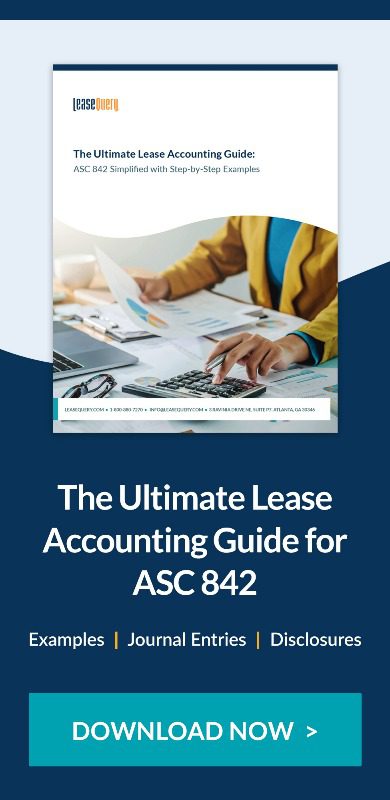Excel is an accountant’s best friend. The ubiquitous software has been around for roughly 40 years and most of us can’t imagine a world without it. It seems like it can do anything.
Unfortunately, to comply with FASB Topic 842, IFRS 16, FRS 102, as well as GASB 87, Excel simply won’t cut it.
What can go wrong when you rely on Excel?
We’re so sure about Excel’s shortcomings because we’ve seen them firsthand. Here are a few true stories that highlight what can go wrong.
Horror story #1: Overpaying by $648,000 on a lease
One company stuck with Excel for their leases and ended up overpaying a whopping $648,000 over six years! Luckily for them, they finally ditched the spreadsheets and got on a proper lease accounting software – in their case, LeaseQuery.
Our system flagged a payment as $0 for one of their leases. The accountant thought it was a glitch at first, especially since she wasn’t around when the lease was signed. Smart move, she checked the contract to be sure our system was right.
Turns out the contract showed that rent should have been fully abated on every anniversary of the lease. Every 12th month, she should have had free rent. There was nothing in Excel to trigger her to change the lease payment to $0 after 12 months. Crazy expensive mistake, right? Because our software caught it, it more than paid for itself right there.
Horror story #2: Missing $2 million after an acquisition
In this real life example, a bank acquired another bank and completely missed out on a $2 million tenant improvement allowance. The reason? They were relying on Excel for their lease accounting, and when acquisitions happen, those leases need a proper accounting review.
When clients switch over to our system, they work with lease accounting experts as part of the implementation process. During this process, we discovered that the acquired bank had a $2 million tenant improvement allowance that was transferable in the event of a sale. But the acquiring bank never got that money because it was buried in Excel with no flags. The buying bank never even knew about it!
Stuff like that is super easy to miss in a mess of spreadsheets. Without a proper system triggering a review, that $2 million just vanished. Talk about a costly oversight!
Horror story #3: Escalating payments too soon and overpaying by $79,000
The limitations of relying on Excel for lease accounting resulted in a $79,000 overpayment for one franchise restaurant group owner. While the commencement date for several leases was in June, the contractual lease year ran from January to December, with annual payment escalations stipulated. Furthermore, specific instructions within the lease agreements outlined a pro-rated first lease year payment extending from the commencement date to the end of the subsequent calendar year for leases starting after January 1st.
Consequently, payment escalation should have occurred after an 18-month period. However, due to Excel’s inability to automatically capture and process these nuanced terms, the company incorrectly began escalating payments in June, only 12 months post-commencement. This oversight led to six months of overpayment, a discrepancy that would have compounded annually had our technical accounting managers not identified and alerted the client to the issue, after they switched to FinQuery Lease Accounting Software.
Horror story #4: The disgruntled employee
The inherent lack of accountability in Excel presents a significant vulnerability, allowing unauthorized modifications that can lead to critical errors. In contrast, our system’s robust audit trail provides a clear record of all actions. For instance, when a disgruntled employee of one of our clients attempted to delete several leases, the system promptly alerted the manager to these changes. The manager was then able to review and reject each deletion, with full visibility into the user responsible and the timestamp of the action, ensuring swift identification and resolution of the attempted manipulation.
Why Excel comes up short: the missing functionalities for lease accounting
As each of the horror stories show, Excel lacks the functionality you need to properly manage your leases. There are 18 critical functionalities that a software should have in order to comply with lease accounting standards. These functionalities fall into 4 categories:
Advanced compliance tools
Navigating changes in lease accounting standards, such as the imminent amendments to FRS 102, presents significant complexities. Excel lacks the inherent capability to accurately interpret these evolving regulations. It cannot perform right of use or contingent rent calculations, address the election of practical expedients, or correctly identify lease and non-lease components.
These tasks go beyond the scope of Excel, making lease accounting software essential for portfolios of more than 10 leases (and good to have even for smaller portfolios).
Accounting and automation tools
Recognizing the unique challenges across industries, lease accounting software should offer robust flexibility. For example, unlike a rigid 12-month calendar, software should accommodate 13-period calendars common in retail and non-standard fiscal year starts, ensuring accurate expense alignment with specific reporting periods. This adaptability, alongside AI-powered automation for tasks like lease entry and complex calculations, diverse reporting, and a centralized contract repository, makes lease accounting software far more scalable and versatile than Excel.
Data integrity
Excel lacks key controls to preserve the integrity of your data. It can’t lock entries, track changes, adjust access based on roles, or prevent duplicates.
For example, unique identifiers don’t prevent the same lease from being entered twice. A unique identifier won’t prevent the same lease entered differently as “corporate headquarters” or “corporate HQ.” So, the software needs to use other means to ensure duplicates are not introduced.
A software that can perform these complex functions to protect the integrity of your data is critical to compliance.
International considerations
Got leases all over the world? Then you’ll need software that speaks your language and handles all those different currencies for each lease: local, functional, and how you report it. It’s not just about translating the cash; it also tackles tricky re-measurements that standards like Topic 842 and IFRS 16 (and don’t forget FRS 102 in the UK and Ireland) make you do. Plus, a good system bends to each country’s specific rules and keeps track of varied fiscal calendars. And if your company’s got branches everywhere, it’d be a lifesaver if it could pull all that lease data together for a clear, worldwide picture.
Other Excel pitfalls
Sure, Excel can do a lot, but who has a month to build a spreadsheet, only to find it’s riddled with errors? We’ve seen it, you probably have too. One wrong number in Excel can snowball into major problems, and good luck figuring out who changed what or when, since it tracks nothing. Ever had that Excel guru leave, taking their magic formulas with them? Or just kept using the same spreadsheet without a second thought? The truth is, everyone messes up in Excel – it’s not built to catch those human errors.
Facing the reality that it’s time to change
Excel is easy to use, cheap, and familiar. But overconfidence in its functionalities and your mastery of it can lead to major errors. In all of the scenarios above, the person who created the Excel spreadsheet felt confident in their work. And in the past, that may have been enough. But with the new lease accounting standards, it’s time for a change.
What it boils down to is this: are you willing to bet your job on it?
If you recognize the need for change but face resistance, consider this question for upper management: We wouldn’t manage fixed assets, a less complex area, with spreadsheets, so why risk the far more intricate world of lease accounting with Excel? It’s like using a car for a short trip and a bicycle for a 300-mile journey. Plus, there’s more at stake than just compliance:
- Your audit bill may be higher if auditors have to sift through spreadsheets, unlike the efficiency of reviewing dedicated software.
- The time spent building a solution in Excel, instead of leveraging built-in automation, drains productivity. Are we truly saving money if employees are programming spreadsheets instead of accounting for leases?
- The future of lease accounting relies on technology. Equipping accounting teams with dedicated software is a crucial investment for efficiency and future growth.
- With no control or accountability, using Excel jeopardizes Sarbanes-Oxley compliance.
Ready for a new solution?
FinQuery has extensive experience guiding organizations through the transition from Excel to LeaseQuery. We understand the key considerations and potential hurdles involved, and we offer our expertise to assist you. You can also request a personalized demo of LeaseQuery to explore your unique needs and requirements with one of our specialists.











